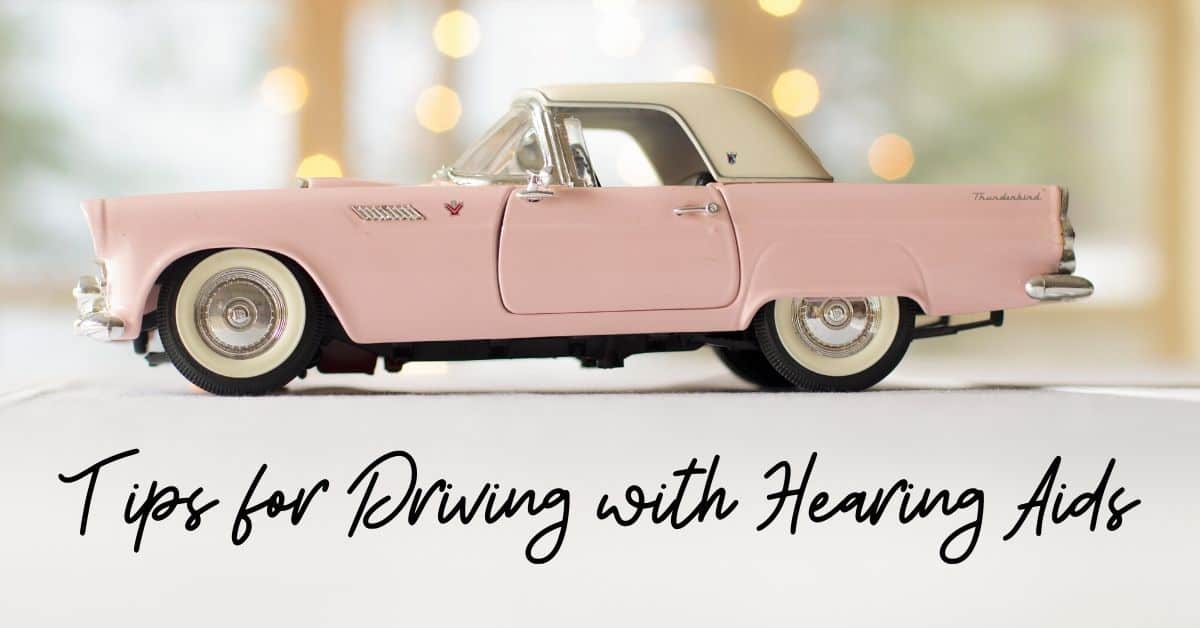
Tips for Driving with Hearing Aids
Carefully following all the rules of the road is important, but staying safe on the road is a bit more complicated than that. As you get older, you may notice that your reaction times are a bit slower, or you have a harder time reading traffic signs. You may need to use bigger side mirrors so you can shoulder check without turning your head as much, or make other modifications to your vehicle. These small adjustments to how you drive will keep you and everyone around you safe on the road. If you have hearing aids, here are some tips to driving safely with hearing aids.
Wear Your Glasses
You need to be able to see clearly to drive safely. Do you wear glasses? If you have hearing loss, it’s extremely important that you wear your glasses every time you get behind the wheel. When you can’t hear as well as you used to, seeing clearly becomes even more important. Make sure your prescription is up to date, and your glasses make it easy to see everything around you.
It’s also a great idea to get prescription sunglasses or anti glare lenses to help you see when you’re on the road. Along with wearing your glasses or sunglasses, avoid driving during sunrise or sunset when the angle of the sun makes it harder to see. If the glaring lights during the night bother your eyes, try to avoid driving after dark.
Give Yourself Extra Time
As you age, you might notice that your reaction times are a bit slower than before. You’ll need to make a few slight adjustments to how you drive to make sure you stay safe. Try to leave extra room between your car and the car ahead of you, so that if they do something unexpected, you’ll have time to react. You can break a bit early when approaching a red light, but don’t break too early! This can be dangerous, and confuse the drivers around you.
Driving will be less stressful if you can avoid high-traffic areas where drivers are in a hurry, or rushing to get home from work. Rather than fighting rush hour traffic, try to drive when there’s less traffic on the road. You can also avoid high-traffic areas, and stay on quieter streets.
Make Adjustments to Your Car
You may have a few aches and pains that make it harder to drive comfortably and safely. You can make a few adjustments to your car so it’s easier for you to drive safely. Start by adding larger side and rear-view mirrors. This will help you see more of the road behind you. You can maintain awareness of the vehicles around you without having to twist your body to shoulder check.
You can also make adjustments to the brake and gas pedals to make them easier to press, or even add hand pedals.
Review Your Medications
If you’ve been having a hard time staying alert behind the wheel, check your medications. Some medications can make you drowsy or less alert, and this could make you less safe behind the wheel. Read the side effects of your medications very carefully, and consult with your doctor if you’ve been having trouble focusing when you’re driving.
If you feel lightheaded, overly tired, or drowsy, don’t drive! Make sure you’re safe to drive every time you get behind the wheel.
Wear Your Hearing Aids
If you have hearing loss, always wear your hearing aids when driving. When you can’t hear clearly it’s hard to stay safe on the road. You’re more likely to miss important sounds in your environment, like a warning honk from a car in your blind spot, or the emergency sirens coming towards the intersection.
Along with wearing your hearing aids, keep distractions in your vehicle to a minimum. Turn off the radio in the car, and ask passengers to stop talking so you can focus on the road. This helps you hear the sound around you, and arrive safely at your destination.
It’s important that you get your hearing checked every year, and make sure your hearing aids are working properly. With these tips, you’ll be able to drive safely with hearing aids, and easily maintain your independence.
